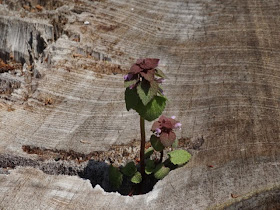 |
| Map in Japanese |
 |
| 左 : 日本語版パンフレット/ 中:英語版 / 右:チケット Zuiganji → ★ in English |
(ショウトウセイリュウザン ズイガンエンプクジ)で、禅寺です。
公式HP: ★
パンフレットによると、平安時代 (794 - 1185 または1192) は、天台宗延福寺(テンダイシュウエンプクジ)であり、鎌倉時代 (1185 - 1333)に圓福寺(エンプクジ)と改称し、建長寺派の禅寺に改められました。
戦国時代 (15世紀末から16世紀末)末期には妙心寺派に入り、現在に至ります。
 |
| パンフレット Pamphlet in Japanese |
Zuiganji's a formal name is Shoutouseiryuzan Zuiganennpukuji and it is Zen temple.
According to their pamphlet,
'In Heian period (794 - 1185 or 1192) , this was Tendai Buddism temple: Tendaishu Enpukuji ; 天台宗延福寺.
In Kamakura period (1185 - 1333), it converted to a Zen temple ; Kenchouji sect and the name was changed to Enpukuji ; 圓福寺, however, just the Kanji characters were different the pronunciation the same.
In Sengku period (the end of 15th century to the end of 16th.), eventually it was taken over by the Myoshinji sect :
the Myohonji Sect of Rinzaishu Buddism Seiryzan Zuiganji Tmeple. '
 |
| 英語版パンフレット Pamphlet in English |
双方とも臨済宗で、本山の場所が違う以外、何が違うのか、その違いがどの程度重要なのかは私にはわかりません。
Official website: ★
Kamakura has Myohonji, too although their head temple is in Kyoto.
Official website in English: ★
Both are Rinzai school, I do not know what is different and how important the differences are, only that their head temples are in different places.
 |
| 参道に向かう/ Towards to Sando : the approach |
 門の前の看板 / Sign Before the Gate 江戸時代 (1603 - 1868) 初期に、仙台藩初代藩主、伊達政宗 (1567 - 1636) が 現在の大伽藍を完成させました。 |
| ですが本堂は平成の大修理のため、2016年春頃まで拝観できません。
瑞巌寺はミッシェラン旅行ガイド「MICHELIN Voyager Pratique Japon」
(2007年)で三ツ星を獲得しています。
2016年春には2007年の状態よりもよくなっていることでしょう。
|
 |
| Pamphlet in English Early in the Edo period (1603 - 1868), the first Lord of Sendai Domain, Date Masamune (1567 - 1636) completed the present big Buddhist Zen temple buildings ; Garan. However, we can not see the main building now, because they have been repairing : 'Heisei Big Reparing' will continue until about spring 2016. This temple got three stars on「MICHELIN Voyager Pratique Japon」2007. I think here will be better in spring 2016 than at that time. |
 |
| 伊達政宗 (1567 - 1636)
By Tosa Mitsusada (1738 - 1806) 画像は下記より/ This from below Wikipedia : ★ Statue of Masamune in Houmotsu-kan (treasure hall)→★ |
According
to Wikipedia about Date
Masamune,
"Date
Masamune (伊達政宗,
September 5, 1567 – June 27, 1636) was
a regional strongman of Japan's Azuchi-Momoyama
period through
early Edo
period.
Heir to a long line of powerful daimyo in
the Tōhoku
region,
he went on to found the modern-day city of Sendai.
An outstanding tactician, he was made all the more iconic for his
missing eye, and Date was often called dokuganryū (独眼竜),
or the "one-eyed dragon"
 |
| お寺に向かって 木々がかなり切られていました。 これも東北震災 (2011)のためかしら?と思いつつ歩きました。 Looking Towards to the Temple Many trees have been cut. I guess they were affected by 'The 2011earthquake off the Pacific coast of Tōhoku'.  門 (松島湾) に向かって / Towards the Gate and Matsushima Bay |
 |
| 切り株 / Treestump |
 |
| 木の芽か、他の植物か.....どちらにしろ、なんとなく嬉しく感じます。 It might be a tree seedling or other plant's ones...whatever I feel pleased. |
 |
大木 / Great Trees  |
境内 / Inside
 特別公開中 ; 庫裡(クリ) 禅宗寺の台所。1959年国宝指定。 Now Special Opening instead of the Main Building Kuri, the Temple Kitchen. It was designated as a national treasure in1959.  |
 |
| "本来実用本位の建物に唐草や花肘木 (ハナヒジキ)の彫刻が施されたことに 政宗公の美意識が窺える。" (パンフレットより) According to the pamphlet "The design was criticized for being impractical. It was carved with arabesque patterns and used flowered struts. It is a fine example of Masamune's sense of beauty."   |
 |
| 池 / Pond |
 |
| アイデアに驚く! 岩肌の中に部屋か倉庫が..... I was surprised by this idea! There might be rooms or stores carved out of rock.  横から この左に池があります。 From the side There is the pond to the left. |
 |
岩壁の上に天然記念物指定された、
樹齢800年!の"夫婦ケヤキ"がありました。
今は.... There were Japanese Natural Monuments : two trees ; Married Couples Japanese Elm Trees which were 800 years old. However, now..... |
 |
| 合掌 危険木となり、2014年天然記念物指定の解除を受け、 その年の5月に切られてしまいました。 Gassho : Añjali Mudrā They became dangerous trees and they were released as Natural Monuments in 2014, and then they were cut in May, 2014.   この切り株下の短いトンネルを抜けます。 We passed through this mini tunnel under the tree stumps. |
 |
| ここを登って行くと... Climb up here and then..  こんな景色を見て.... We saw this view.... |
 |
| 左: 日本語版パンフレット / 右: 英語版パンフレット パンフレットにある陽徳院御霊屋 (ヨウトクインオタマヤ)に行き着きます。 政宗の正室、愛姫 (マゴヒメ / 1568 - 1653) の墓堂です。 彼女は政宗の死後、瑞巌寺で仏門に入り、陽徳院と名のりました。 Left : Pamphlet in Japanese / Right : in English We arrived at Yotokuin's Mausoleum which is in the pamphlet. She had been called Megohime (1568 - 1653). She became a nun in this temple and was named Yotokuin after her husband, Date Masamune died. |
